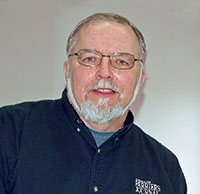I took a call in the office the other day from a horse owner who wanted to praise the work her farrier had done.
I get those calls from time to time, but the upside for one farrier frequently has a downside for another — and sometimes more than one.
This caller, a dressage rider, had grown very frustrated with how her favorite mount was going. She’d been through a number of farriers, who had tried a variety of shoes and trims and finally had found one who managed to return her horse to soundness and to the type of performance she was expecting.
As we talked, it occurred to me that there was an aspect to this successful outcome that maybe wasn’t getting enough credit — rest.
Barefoot Temporarily
One of the things the owner and farrier had agreed upon was taking the shoes off and giving the feet a little time off. Using a rasp — and after some instruction from the farrier — the owner touched up the trim every few days to promote even growth. The horse was given a chance to grow heel and, according to the caller, wound up with a much stronger and more symmetrical hoof before the shoes were nailed back on.
Since then, the horse has returned to high-level dressage competition and has maintained sound and healthy feet with regular hoof-care appointments.
Obviously, correct trimming was a big factor here, but I found myself wondering about how big a role that simple rest might have played in the horse’s recovery.
Rest is great therapy for many, many problems. But for farriers working in the show rings and racetracks, rest often isn’t an option that an owner or trainer will consider.
A few years ago, I heard G. Kent Carter, a veterinarian and former president of the American Association of Equine Practitioners, mention the importance of rest in treating equine athletes that are suffering from lameness.
“Sometimes rest is the most important aspect of recovery,” the veterinarian from Texas A&M University said in a lecture. “Sometimes we need to let the horse heal and compete later. Sometimes that can take a year or more.”
Rest, Not Total Inactivity
But Carter also stressed that when he advocated rest, he wasn’t talking about letting the horse become a pasture ornament. Carter has found that simply pulling the shoes and turning the horse out for an extended period rarely results in a positive outcome. Instead, he recommends controlled exercise and regular hoof care, combined with other therapies appropriate for a horse’s particular needs.
The owner who called me, along with her farrier, followed Carter’s advice, even if they didn’t know it. They removed the shoes and gave the feet time to heal and regenerate. The regular adjustments of the trim seem to have also been helpful. Farrier and owner clearly made an effort to communicate and the owner took an active role in maintaining her horse’s feet. I didn’t ask her specifically about controlled exercise during this “rest” period, but from a couple of things she mentioned, it didn’t sound as if the horse was spending days and weeks standing in its stall or ambling around a paddock.
Farriers know about the importance of rest, of course. This story has a good outcome. But I’ve also listened to farriers explain that a horse would be better off not competing for a few days — then heard an owner or trainer say that horse was going to be in that ring, or on that track, with or without the farrier’s help. In short, “You shoe him, or I’ll find someone else who will.”
That’s a tough spot to be in. So where do you draw the line?







